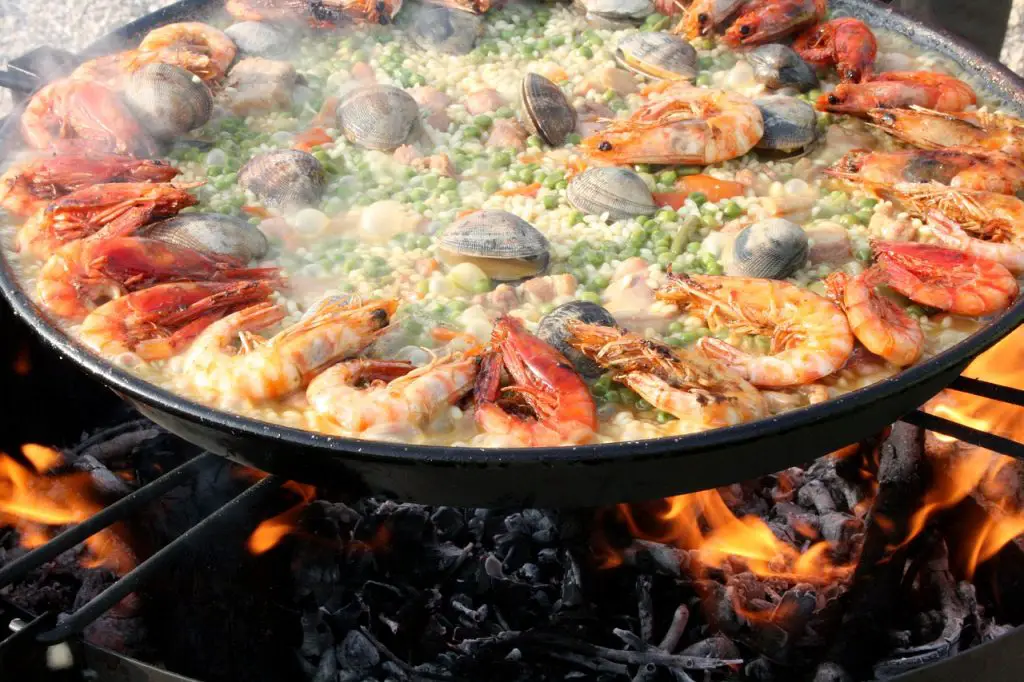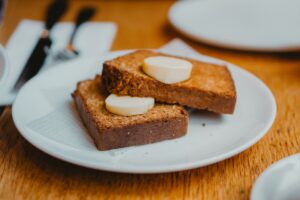Spanish cuisine is a vibrant tapestry of flavors and regional specialties, and at the heart of this culinary tradition lies the beloved Spanish paella. This iconic dish, hailing from the Valencia region on the east coast of Spain, is a true reflection of the country’s rich history and diverse culture. With its aromatic saffron-infused rice, succulent seafood, and a medley of vegetables and spices, paella has captured the hearts and palates of food enthusiasts worldwide. In this comprehensive guide, we’ll delve into the history, the regional variations, and the step-by-step process of preparing an authentic Spanish paella.
I. A Glimpse into Paella’s Historical Roots
To truly appreciate the art of making paella, it’s important to understand its historical context. Paella, which takes its name from the wide, shallow pan it’s traditionally cooked in, has its origins in the fields of Valencia, where it was a simple, nourishing meal for farmers. The dish evolved over centuries, influenced by the various cultures that have shaped Spain’s history, including the Moors, who brought rice to the Iberian Peninsula.
Moorish Influence: Rice and Spices
The Moors introduced rice, saffron, and spices to the region, which became key components of paella. Saffron, with its vivid color and distinct flavor, is often considered the soul of paella, giving it its characteristic golden hue and a unique aroma.
The Role of Ingredients: Local and Seasonal
Traditional paella is a testament to the use of local and seasonal ingredients. Fresh seafood, such as mussels, clams, shrimp, and squid, are commonly used in coastal areas, while inland regions may feature rabbit, chicken, or snails. Fresh vegetables like bell peppers, tomatoes, and green beans are essential for adding depth of flavor and texture.
Social and Cultural Significance
Paella is more than just a meal; it’s a social event in Spain. Families and friends gather around the paella pan, often set up outdoors over an open flame, to share stories, laughter, and good food. This communal aspect of paella is a cherished tradition in Spanish culture.
II. Regional Variations of Spanish Paella
Spain’s diverse geography and culinary heritage have given rise to numerous regional variations of paella. Each variation showcases local ingredients and flavors, resulting in a delightful array of paella styles.
Valencian Paella
The original and most traditional form of paella, Valencian paella, is a celebration of simplicity and purity of ingredients. It typically features rabbit, chicken, or both, as well as snails and a variety of vegetables. Valencians take great pride in maintaining the authenticity of their paella, and deviations from the classic recipe are met with stern disapproval.
Seafood Paella
Hailing from the coastal regions of Spain, seafood paella is a treasure trove of maritime flavors. It showcases an abundance of fresh seafood, including prawns, mussels, clams, and squid. The seafood is often the star of the show, with minimal interference from other proteins.
Mixed Paella
Mixed paella, or paella mixta, is a popular variation that combines both seafood and meat. It harmoniously blends the flavors of chicken, rabbit, or pork with an assortment of seafood, creating a satisfying and well-rounded dish that appeals to a broad range of tastes.
Vegetarian Paella
For those who prefer a plant-based option, vegetarian paella offers a delectable alternative. This version replaces meat and seafood with an array of colorful vegetables, including artichokes, bell peppers, tomatoes, and green beans. It’s a celebration of the bountiful produce Spain has to offer.
Paella de Mariscos
Paella de mariscos is a seafood lover’s dream come true. This variation focuses exclusively on the ocean’s bounty, with an abundance of prawns, shrimp, clams, mussels, and squid. The seafood is complemented by aromatic saffron rice, creating a dish that’s both visually stunning and incredibly flavorful.
III. The Art of Making Authentic Spanish Paella
Now that we’ve explored the history and regional diversity of paella, let’s dive into the step-by-step process of creating an authentic Spanish paella. While there are variations in ingredients and techniques, the fundamental principles remain the same.
Ingredients (Serves 4-6):
2 cups of Spanish Bomba rice (or any short-grain rice)
1 lb of mixed seafood (prawns, mussels, clams, squid)
1/2 lb of boneless chicken thighs or rabbit, cut into bite-sized pieces
1/2 cup of green beans, trimmed and cut into 2-inch pieces
1 red bell pepper, thinly sliced
1 medium tomato, grated
1/2 onion, finely chopped
3 cloves of garlic, minced
1/4 teaspoon of saffron threads
1 teaspoon of smoked paprika (pimentón)
1/4 cup of extra-virgin olive oil
4 cups of chicken or seafood broth
Salt and freshly ground black pepper to taste
Lemon wedges and fresh parsley for garnish
Equipment:
A wide, shallow paella pan (a traditional paellera) or a large skillet
A heat source (gas burner, open fire, or charcoal grill)
A wooden spoon or paella paddle
Step 1: Prepare the Saffron Infusion
In a small bowl, combine the saffron threads with a tablespoon of warm water. Allow it to steep and release its vibrant color and flavor.
Step 2: Heat the Paella Pan
Place the paella pan over medium-high heat and add the olive oil. Allow it to heat until it shimmers.
Step 3: Sear the Meat and Seafood
Season the chicken or rabbit pieces with salt and pepper. Add them to the pan and sear until they turn golden brown on all sides. Remove and set aside.
In the same pan, add the seafood and cook briefly until it just begins to turn opaque. Remove and set aside.
Step 4: Sauté the Vegetables
In the same pan, add the chopped onion, minced garlic, and sliced red bell pepper. Sauté until the vegetables soften and become fragrant.
Step 5: Incorporate the Tomatoes and Paprika
Add the grated tomato and smoked paprika to the pan. Cook for a few minutes until the tomato breaks down and the mixture thickens.
Step 6: Add the Rice and Saffron
Sprinkle the rice evenly over the vegetables and stir to coat the rice with the tomato mixture.
Pour in the saffron infusion and distribute it evenly across the pan. This will infuse the rice with the signature golden color and aroma of saffron.
Step 7: Pour in the Broth
Carefully pour the chicken or seafood broth into the pan. Ensure that the rice is evenly distributed.
Step 8: Arrange the Meats and Seafood
Return the seared chicken or rabbit pieces to the pan and arrange them evenly.
Place the seafood on top of the rice, arranging it decoratively.
Step 9: Simmer and Cook
Reduce the heat to medium-low and let the paella simmer gently. Avoid stirring the rice from this point on, as the formation of the coveted “socarrat” (a caramelized, crispy rice crust at the bottom) requires undisturbed cooking.
Step 10: Achieve the Socarrat
Continue simmering until the liquid is mostly absorbed, and the rice begins to form a crust on the bottom, usually around 15-20 minutes. You’ll hear a crackling sound, which is a sign that the socarrat is forming.
Taste the rice for doneness. It should be tender but with a slight bite (al dente). If necessary, add a bit more broth and continue cooking.
Step 11: Rest and Serve
Remove the paella from the heat and let it rest for a few minutes. This allows the flavors to meld together.
Garnish the paella with lemon wedges and fresh parsley.
IV. Tips for Perfecting Your Paella
Use high-quality ingredients, including Spanish Bomba rice, saffron threads, and fresh seafood.
Maintain a consistent heat source to ensure even cooking.
Avoid stirring the paella once you’ve added the broth to encourage the formation of socarrat.
Customize your paella with your favorite ingredients, but stay true to the regional style you’re aiming for.
Serve paella with a crisp white wine or a refreshing sangria for the perfect pairing.
Spanish paella is more than just a dish; it’s a symbol of Spain’s rich culinary heritage, reflecting the country’s diverse regions, cultures, and flavors. Whether you prefer the simplicity of Valencian paella, the seafood extravaganza of paella de mariscos, or any of the other delightful variations, making paella is an art form that anyone can master with practice and dedication. So, gather your friends and family, fire up the paella pan, and embark on a delicious journey through Spain’s culinary traditions with this authentic Spanish paella recipe.
The Legacy of Paella in Modern Cuisine
Spanish paella has transcended its humble origins and become a global sensation, beloved by food enthusiasts around the world. Its versatility and ability to accommodate a wide range of ingredients have made it a staple in modern cuisine. Paella has also inspired chefs to experiment with innovative variations, incorporating ingredients from different culinary traditions while still honoring its core principles.
Fusion Paella: Chefs around the world have embraced fusion cuisine, combining the flavors of paella with ingredients and techniques from other cultures. You might encounter paella with Asian, Latin American, or Middle Eastern influences, creating exciting new flavor profiles.
Paella Parties: Paella has become a popular choice for outdoor gatherings and celebrations. Hosting a paella party, where guests can watch the paella being cooked and then enjoy it together, has become a trend in many parts of the world.
Paella Cook-Offs: Competitions and cook-offs centered around paella have gained popularity. These events allow amateur and professional chefs alike to showcase their skills and creativity while paying homage to this iconic dish.
VII. The Future of Paella
As paella continues to evolve and adapt to modern tastes, its future is bright. The dish’s enduring appeal lies in its ability to bring people together, whether around a traditional wood-fired paella pan or in contemporary culinary settings. Paella represents not only the flavors of Spain but also the warmth of Spanish hospitality and the joy of communal dining.
In recent years, efforts have been made to preserve the authenticity of paella, particularly in the Valencian region, where it holds deep cultural significance. Organizations and associations have been established to protect traditional paella recipes and methods, ensuring that this cherished culinary heritage endures for generations to come.
VIII. Frequently Asked Questions
Can I use a regular skillet or pan to make paella if I don’t have a paella pan?
While a traditional paella pan, known as a paellera, is the ideal choice, you can use a wide, shallow skillet or pan as a substitute. Just be sure it can comfortably accommodate all the ingredients.
What type of rice should I use for paella?
Spanish Bomba rice is the preferred choice for paella due to its ability to absorb flavors and remain firm while cooking. However, you can use other short-grain rice varieties if Bomba rice is not available.
Can I make paella with frozen seafood?
Fresh seafood is preferred for its superior flavor and texture, but you can use frozen seafood if necessary. Thaw it before adding it to the paella, and be mindful not to overcook it.
What if I don’t have saffron?
Saffron is a crucial ingredient in paella, but if you don’t have it, you can use a pinch of ground turmeric for color and a mild flavor substitute.
Is it possible to make a vegetarian or vegan paella?
Absolutely! You can create a delicious vegetarian or vegan paella by substituting meat and seafood with an assortment of vegetables, beans, or plant-based protein sources like tofu or tempeh.
Spanish paella is not just a recipe; it’s a cultural treasure that invites you to explore the flavors and traditions of Spain. Whether you choose to prepare a traditional Valencian paella, a seafood extravaganza, or a creative fusion of flavors, making paella is a culinary journey that connects you with the essence of Spanish cuisine.
As you embark on your paella-making adventure, remember that practice makes perfect. The more you cook paella, the better you’ll become at achieving that elusive socarrat and balancing the flavors of this iconic dish. So, gather your loved ones, raise a glass of Spanish wine, and savor the magic of Spanish paella, a culinary masterpiece that has captured hearts and palates for centuries. ¡Buen provecho!




